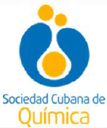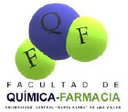
7th International Chemistry Symposium
SIQ 2019
Titanium and its alloys have become the material of choice for long-term implant application mainly due to their good biocompatibility, high corrosion resistance and light weight. In order to stabilising bone-prosthesis interface hydroxyapatite coatings are frequently applied. The biomimetic coating technology outstands due to its simplicity, low cost and versatility; yet, it requires long deposition times and changes of solutions in order to avoid bacterial contamination. Thus, the aim of this work was to obtain hydroxyapatite coatings onto titanium substrates through an accelerate biomimetic method. Before coating, substrates were mechanical and chemical treated in alkaline solution. Once treated, were immersed in a seven times concentrated simulated body fluid (7xSBF) solution at different pH conditions and immersion times (1h to 24h). Phase composition was study by X-ray diffraction, morphological characterization was determined by scanning electron microscopy and surface roughness of the samples was obtained by profilometry. Optical microscopy and Image J software (for images processing) were also used. Results showed that pre-treated samples exhibit a superficial sodium titanate layer in form of globular agglomerates (0.428 ± 0.16m) with adequate roughness for further deposition. Without controlling pH during synthesis, the presence of dicalcium phosphate dihidrate (DCPD) was observed at 24h in addition to titanium characteristics peaks and no transformation to hydroxyapatite was detected after sintering at 800°C. When pH is controlled, the presence of a small thickness layer of calcium deficient hydroxyapatite (CDHA) with a nanometric and amorphous structure was found at early times such as 1h.
Titanium and its alloys have become the material of choice for long-term implant application mainly due to their good biocompatibility, high corrosion resistance and light weight. In order to stabilising bone-prosthesis interface hydroxyapatite coatings are frequently applied. The biomimetic coating technology outstands due to its simplicity, low cost and versatility; yet, it requires long deposition times and changes of solutions in order to avoid bacterial contamination. Thus, the aim of this work was to obtain hydroxyapatite coatings onto titanium substrates through an accelerate biomimetic method. Before coating, substrates were mechanical and chemical treated in alkaline solution. Once treated, were immersed in a seven times concentrated simulated body fluid (7xSBF) solution at different pH conditions and immersion times (1h to 24h). Phase composition was study by X-ray diffraction, morphological characterization was determined by scanning electron microscopy and surface roughness of the samples was obtained by profilometry. Optical microscopy and Image J software (for images processing) were also used. Results showed that pre-treated samples exhibit a superficial sodium titanate layer in form of globular agglomerates (0.428 ± 0.16m) with adequate roughness for further deposition. Without controlling pH during synthesis, the presence of dicalcium phosphate dihidrate (DCPD) was observed at 24h in addition to titanium characteristics peaks and no transformation to hydroxyapatite was detected after sintering at 800°C. When pH is controlled, the presence of a small thickness layer of calcium deficient hydroxyapatite (CDHA) with a nanometric and amorphous structure was found at early times such as 1h.
About The Speaker

Loreley Morejón Alonso






